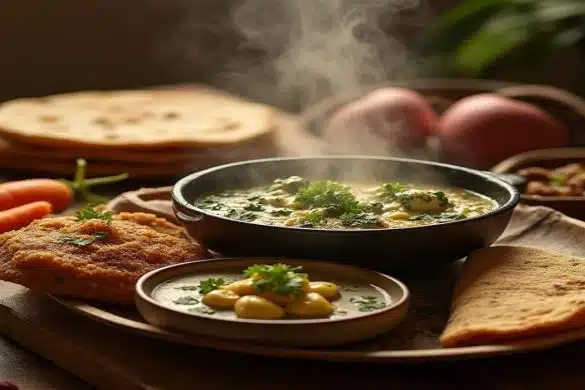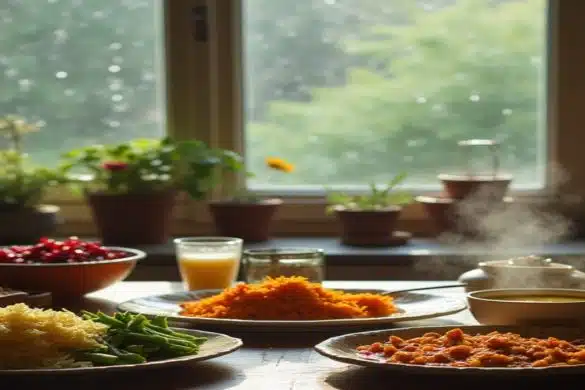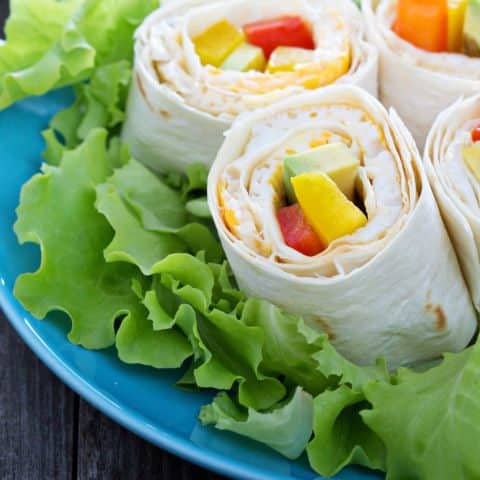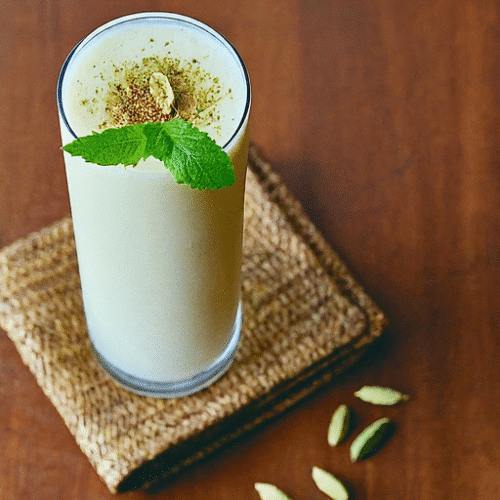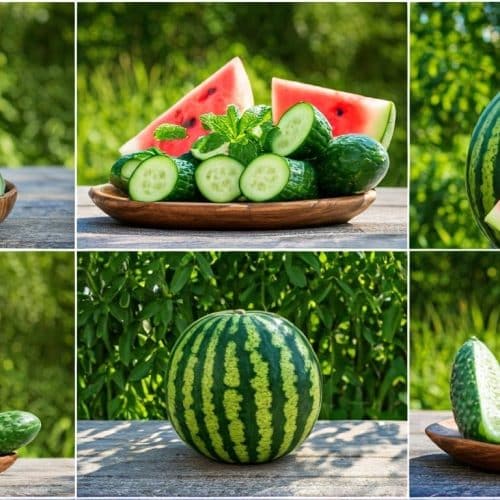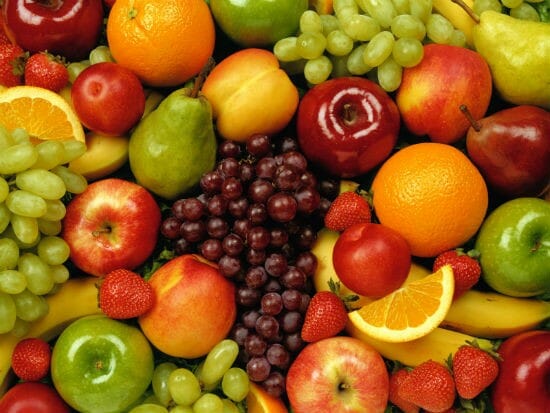Summer blesses us with vibrant fresh produce, juicy summer fruits, and fragrant fresh herbs, but the real challenge lies in making that summer harvest last into the winter months. To savour summer’s bounty, whether you’re a fan of organic food or love stocking up on seasonal flavours, smart home food preservation, as recommended by the National Centre, is the key.
From harnessing the power of lactic acid fermentation to storing goodies in a cool, dark place, preserving food isn’t just old-school wisdom—it’s a must! Let’s explore some of the best ways of how to preserve food in summer.
Discover the Secret Methods Of How To Preserve Food In Summer, No Fridge Needed!
Does the question, “How to Preserve Food in Summer,” still disturb your peace? Discover the secret methods to keep summer fruits preserved, no fridge required! Here are some great ways to store your food: olive oil, vinegar, and other easy techniques.
1. Smoking: A Simple Way to Preserve Food
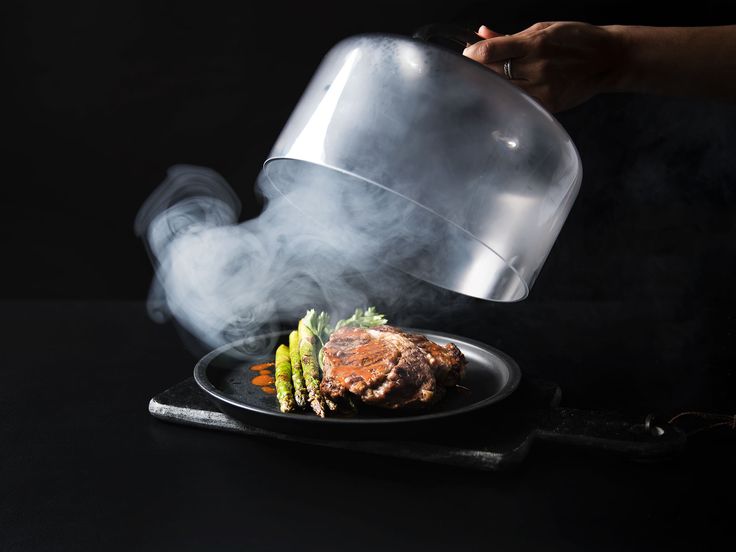
Smoke preservation method
Smoking is an effective and flavourful method to preserve food in summer. Not only does it extend the shelf life of your summer harvest, but it also enhances the flavour of meats, fish, and even vegetables. Here’s a compact guide on how to smoke food for preservation:
- Prepare the Food: Choose your meat, fish, or vegetables. Trim excess fat from the meat and season it with salt or spices. Clean and cut vegetables to your preferred size.
- Set Up the Smoker: For traditional smoking, use a smoker or grill. Add wood chips (like hickory or applewood) to create the smoke. Maintain a low and steady temperature of around 180-220°F (82-104°C). This slow cooking process helps preserve the food while infusing it with rich flavours.
- Smoking Process: Place the food in the smoker, ensuring enough space for the smoke to circulate. Smoking times vary: fish might take a few hours, while more significant cuts of meat could take longer. Check for desired texture and flavour.
- Cooling and Storing: Once smoked, allow the food to cool. Store it in airtight containers or vacuum-sealed bags. For long-term storage, keep it in a cool, dark place, or refrigerate for shorter durations. Smoked food can last for months when stored properly.
- Combine with Fermentation for Health Benefits: Smoking and fermentation are paired for added digestibility. This combo not only preserves food but also enhances its nutritional value.
2. Salt: A Time-Tested Technique to Preserve Food
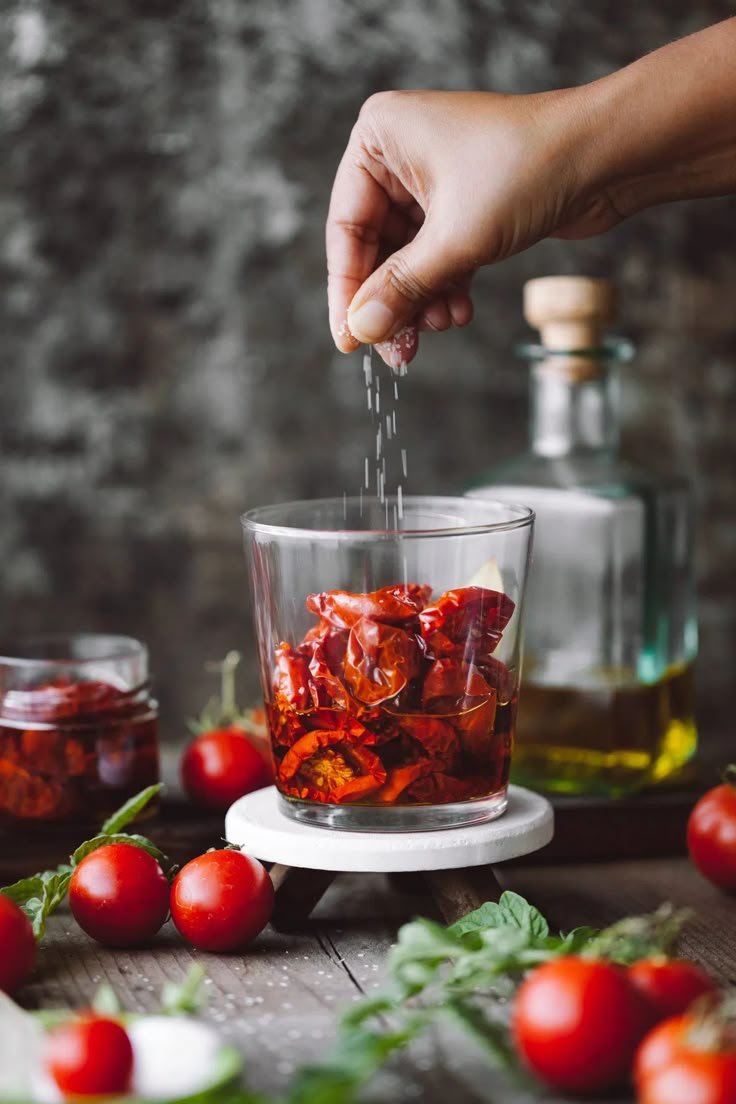
A jar of red tomatoes sprinkled with salt
If you’re wondering how to preserve food in summer, salt is a tried-and-true technique used for centuries. This method not only preserves the freshness of summer produce but also enhances the flavours of your food. Here’s how salt can help you preserve your harvest:
- Preserving with Salt: Salt draws out moisture, inhibiting the growth of harmful microorganisms and helping prevent spoilage. It’s a great alternative to refrigeration, especially for fresh summer produce like tomatoes, cucumbers, and herbs. Simply sprinkle salt on cut vegetables or pack them into jars for storage.
- Enhancing Flavour and Nutrient Content: In addition to preservation, salt helps concentrate the herb’s flavour and can even improve the nutrient content of foods by drawing out excess water. Whether you’re curing meats or fermenting vegetables, it’s a great way to preserve the fresh flavours of summer.
- Home Canning and Food Banks: Home canning with salt can be a good way to store excess garden produce, especially when paired with jar company Ball jars. Plus, with the growing number of food banks and nearby food pantries in North America, preserving food for others is part of a new kind of food drive, benefiting both your household and those in need.
- Long-Term Storage: For an extensive list of preserved foods, check out online recipe lists or fermentation support forums. Salt preservation helps your food last without the need for extreme cold, making it ideal for maintaining lots of other healthy foods well into the colder months.
3. Underground Fridge: A Cool, Natural Way to Preserve Food in Summer
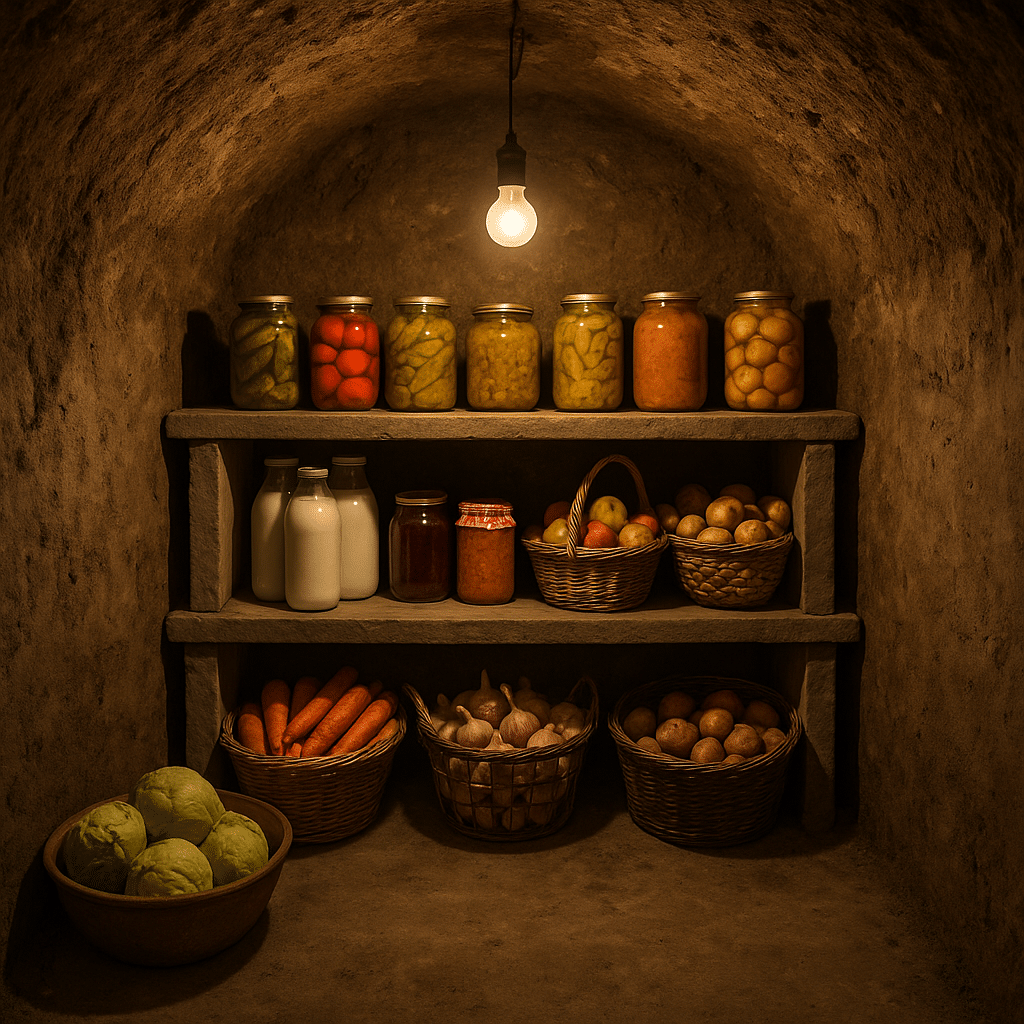
food being preserved in underground fridge
One ingenious method is to use an underground fridge when considering how to preserve food in summer. This natural, energy-efficient preservation technique has been gaining attention for its ability to keep perishable food cool without relying on electricity. Here’s how it works:
- Natural Cooling with the Earth: An underground fridge takes advantage of the Earth’s natural coolness, keeping food at an optimal temperature, especially during summer. It’s perfect for storing fresh flavours and produce at the peak of their ripeness, ensuring food stays fresh without refrigeration.
- A Nod to Fermentation: This method also complements fermentation. Sandor Katz, a renowned expert on fermentation, emphasises that underground storage supports the fermentation process by maintaining consistent cool temperatures. It helps enhance the herb’s flavour and promotes optimal nutrient content in your foods, making it a great way to preserve a mix of many different kinds of food.
- Preservation Advantages: Using an underground fridge offers several preservation advantages. The cool environment helps high acidity levels break down certain foods, reducing spoilage. It’s a good alternative to conventional refrigeration, especially when preserving large quantities of food like root vegetables or excess garden produce.
- Supporting Food Security: With the increasing number of food banks and food tank initiatives, using natural preservation methods like underground fridges can be a sustainable solution for storing food that can later be donated to nearby food pantries.
4. Root Cellar: A Simple, Traditional Method to Preserve Food in Summer
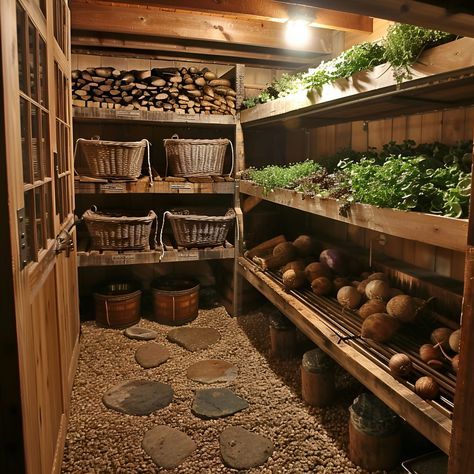
Root Cellar Size Functionality Uses Furniture and Renovatio
If you’re looking for how to preserve food in summer, a root cellar is one of the oldest and most reliable methods. This traditional food storage solution has been used for centuries to keep food fresh and flavorful, especially during warmer months. Here’s how a root cellar can help:
- Natural, Cool Storage: A root cellar uses the earth’s natural temperature to store perishable food in a cool, dark environment. This is ideal for foods like potatoes, carrots, and apples, which stay fresh longer when kept at consistent temperatures. It’s an easy and simple method of preserving food without the need for modern refrigeration.
- Preserving the Taste of Summer: By storing food in a root cellar, you can maintain the taste of summer even during the colder months. It keeps your fresh flavours intact, maintaining seasonal produce’s natural sweetness and texture. Root cellars are particularly effective for storing vegetables at the peak of their ripeness, ensuring they retain their optimal nutrient content.
- Fermentation Support: Root cellars also complement the process of fermentation, a popular method for preserving a wide variety of foods. By maintaining a cool environment, they allow for the slow fermentation of foods like pickles or sauerkraut. This helps enhance the herb’s flavour and offers a range of fermentation resources for those interested in preserving food through natural methods.
- Simple Food Preservation Techniques: Root cellars offer a simple food preservation technique that doesn’t require complicated equipment or processes. This makes it an excellent alternative for those looking to store food sustainably, whether for personal use or traditional food drives to help those in need.
5. Zeer Pot: A Natural and Effective Way to Preserve Food in Summer
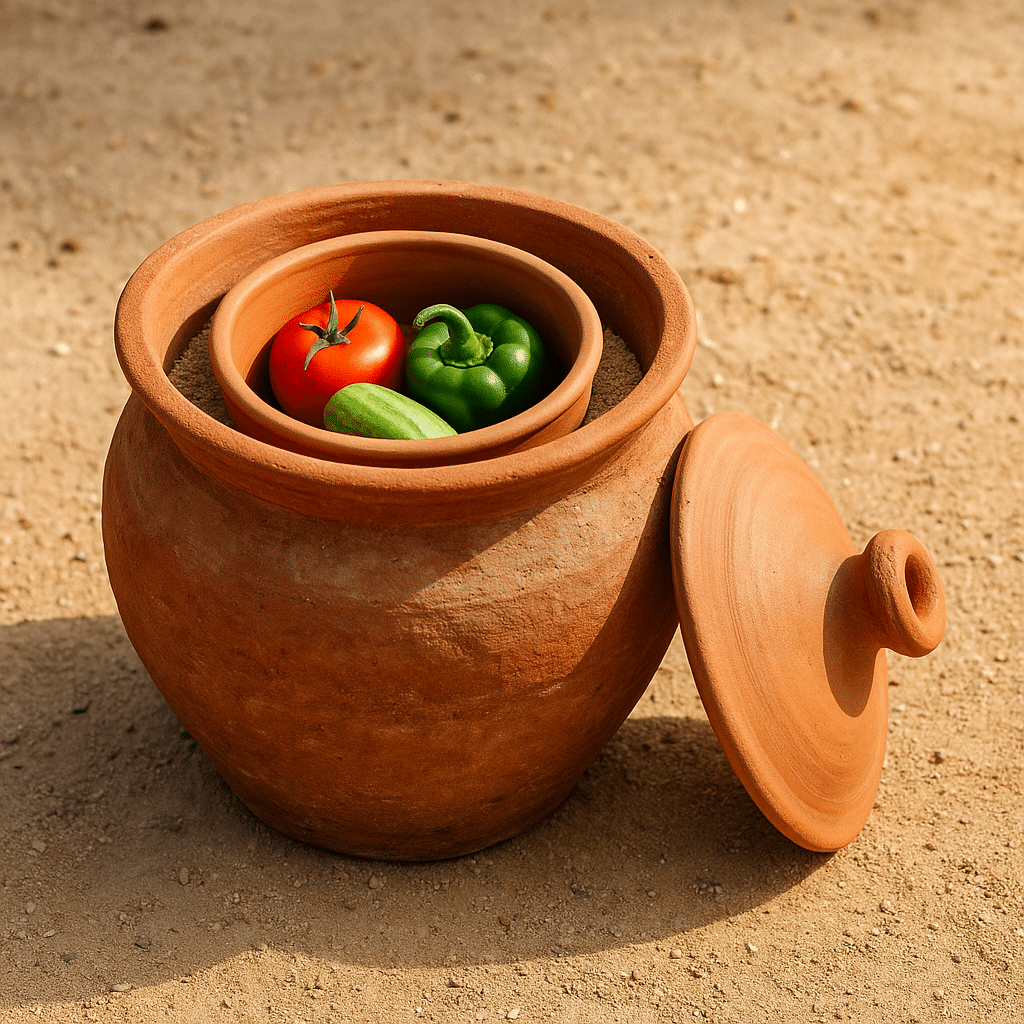
Zeer pot with preserved vegetable in it
When it comes to how to preserve food in summer, the zeer pot is an innovative and sustainable method that uses evaporation to keep food cool without electricity. This ancient, natural preservative technique is ideal for those seeking an eco-friendly way to savour summer’s bounty and keep food fresh. Here’s how it works:
Evaporative Cooling Process: A zeer pot consists of two clay pots, one placed inside the other, with sand in between. Water is poured into the sand, and as it evaporates, it cools the inner pot, creating a natural refrigeration effect. This simple yet effective preserving process can extend the shelf life of fruits, vegetables, and even dairy products.
Preserving Fresh Flavours: Using a zeer pot helps maintain the fresh flavours of produce by keeping it at an optimal temperature, without refrigeration. It’s perfect for storing fresh fruits and vegetables at the peak of their ripeness, preserving their nutrient content and taste. The cooling effect also helps in maintaining the digestibility of fermented foods, making it an ideal tool for fermenting your own vegetables.
Sustainable Preservation: This method is not only practical but also sustainable. If you’re interested in more general information about the preserving process, you can refer to resources like the home preserving bible website or the Flavoured Vinegars Guide.
6. Canning: A Reliable Way to Preserve Food in Summer
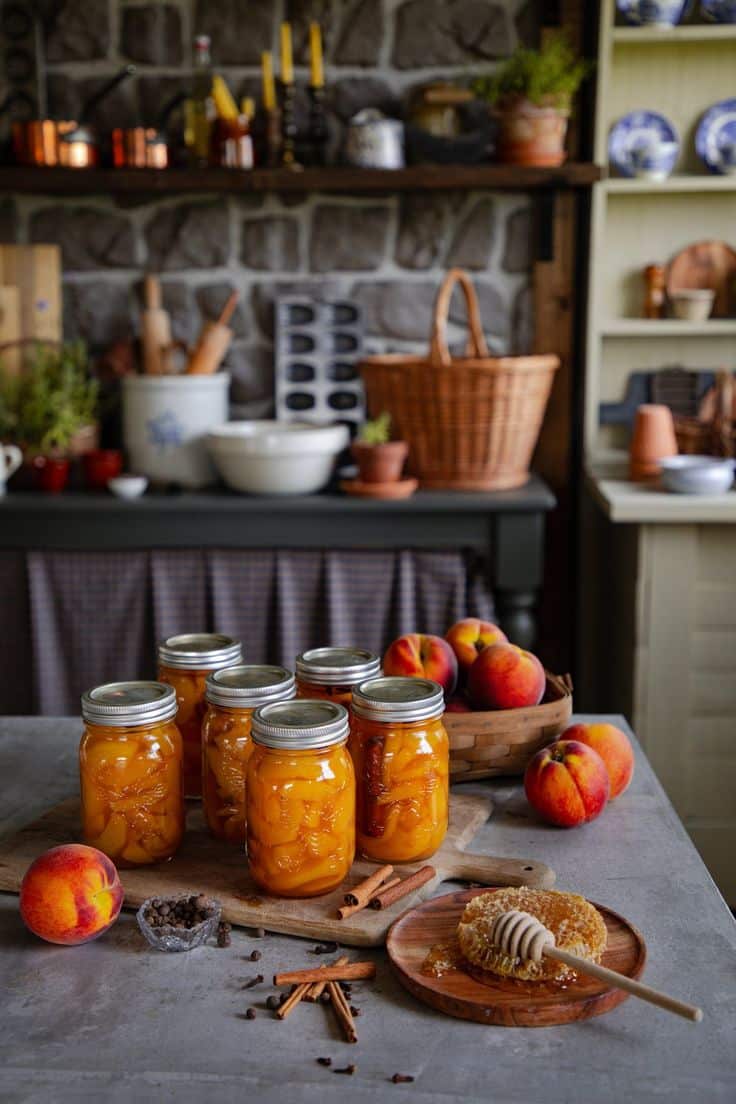
canned honey spice peaches
Regarding how to preserve food in summer, canning is one of the most effective and popular methods. Whether you choose water bath or pressure canning, this technique ensures you can savour summer’s bounty long after the season ends. Here’s how canning works:
Water Bath Canning vs. Pressure Canning
- Water bath canning is ideal for high-acid foods like tomatoes, pickles, and jams. It involves submerging jars in boiling water to seal them and preserve fresh flavours.
- Pressure canning is used for low-acid foods, like meats, vegetables, and whole meals. This method reaches higher temperatures to eliminate new bacteria and prevent spoilage.
Preserving Freshness and Nutrients
Canning helps preserve the fresh flavours and nutrient content of your produce by sealing it in jars, which prevents air and bacteria from affecting the food. It’s a great way to enjoy fruits and vegetables at the peak of their ripeness all year round.
Flavour and Fermentation Support
Incorporating popular flavorings and fresh flavors of herbs in your canning jars enhances the taste of foods. For example, pickling with vinegar can aid in the digestibility of fermented food, a technique well-covered in resources like the wild fermentation portal and the flavored vinegars guide from the University of Georgia that outlines popular flavorings and recipes.
Canning is a reliable and sustainable method to preserve various foods, ensuring you enjoy your summer harvest for months to come. For more detailed information, refer to National Centre for Home Food Preservation resources.
7. Dehydrating: A Simple and Effective Way to Preserve Food in Summer

Dehydrated apples
If you’re looking for how to preserve food in summer, dehydrating is a fantastic option that retains the fresh flavours of your summer produce. This method removes moisture from food, preventing the growth of bacteria and mould, allowing you to store your harvest for months. Here’s how it works:
The Dehydrating Process: Dehydrating involves removing water from different types of foods like fruits, vegetables, and herbs. Using a dehydrator or a simple oven, you can dry foods at low temperatures to preserve their nutrients, flavours, and texture. By eliminating moisture, the growth of harmful microorganisms is slowed, extending the shelf life of your foods.
Savour Summer’s Bounty: Dehydrated foods retain much of their nutrient content and fresh flavours, making them an excellent way to savour summer’s bounty year-round. You can dehydrate fruits like apples and strawberries, or vegetables like tomatoes and peppers, preserving them at their ripeness.
Flavour and Herb Preservation: Dehydrating also works wonders for preserving herbs’ flavour. When dried, herbs like basil, rosemary, and thyme retain their aromatic oils, enhancing the taste of dishes. Adding popular flavourings such as garlic or spices can further elevate the flavours of your preserved foods.
8. Freeze Drying: A Modern Way to Preserve Food in Summer
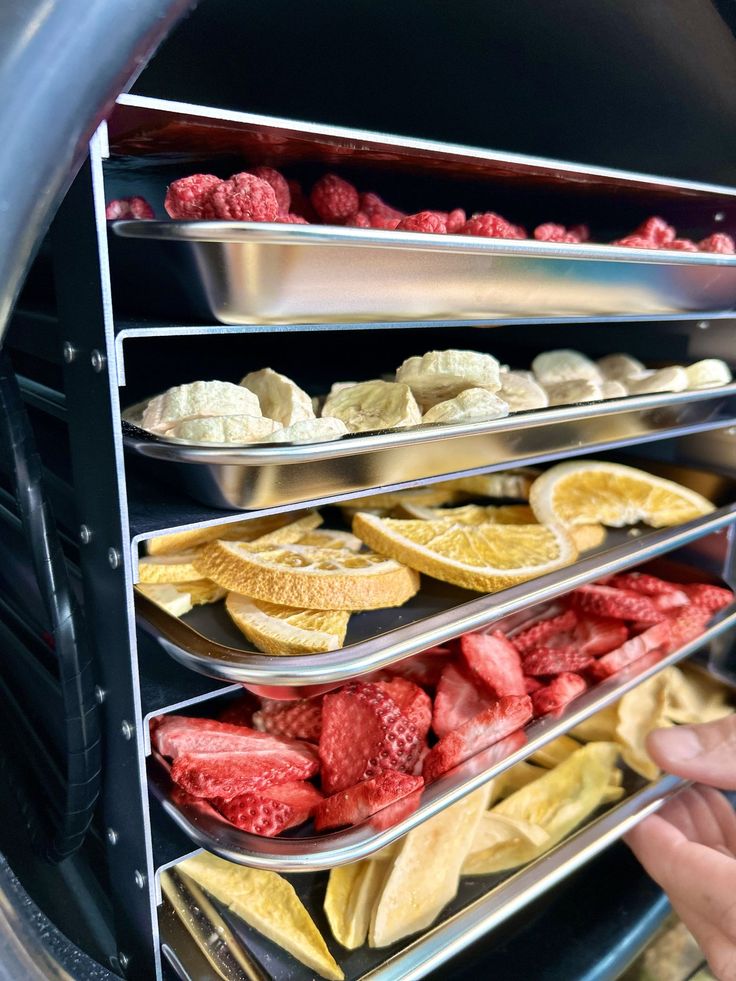
fruits being freeze dryed
If you’re wondering how to preserve food in summer, freeze drying is one of the most advanced and effective methods to maintain the fresh flavours and nutrient content of your summer harvest. Unlike traditional freezing, freeze drying removes moisture from food, locking in taste and texture while extending shelf life. Here’s how it works:
The Freeze Drying Process: Freeze drying involves freezing the food first, then slowly warming it in a vacuum chamber. This process removes the moisture through sublimation, turning ice directly into vapour. This preserves the food without compromising its flavour, keeping it almost as fresh as the day it was harvested. It’s especially ideal for fruits, vegetables, and even whole meals.
Flavour and Fermentation Support: Freeze-drying also maintains the digestibility of the fermented food, allowing you to preserve the probiotics without compromising their benefits. It’s a great way to store foods without altering their natural texture and works well with popular flavourings like herbs and spices.
Conclusion
Preserving your summer bounty is more than just extending the gardening season; it’s a smart and practical way to ensure your family enjoys healthy, homegrown food all year round. In a world where modern cooling technologies aren’t always available or useful, the methods we’ve discussed showcase the brilliance of traditional techniques that have stood the test of time.
By incorporating these clever preservation methods into your daily routine, you can enjoy a steady supply of nutrient-packed food, reduce waste, and save money on groceries. These age-old methods connect us to our roots and ensure that we can savour the richness of summer even as the winter chill sets in. So, why wait? Embrace these time-tested techniques and make your kitchen a treasure trove of preserved goodness!
Frequently Asked Questions
What is the most efficient way to preserve herbs during summer?
Herbs can be preserved efficiently through drying or freezing. For drying, bunch them together and hang in a dry and well-ventilated area. For freezing, preserve them in vegetable oil, which reduces browning and freezer burn that often occurs when herbs are frozen on their own.
Can I freeze cooked meals for preservation?
Yes, you can freeze cooked meals for preservation. Ensure the food has cooled to room temperature before freezing. Remember to freeze the meal in adequate portions to avoid repeated freezing and thawing, which can degrade the quality and safety of the food.
Are there any health risks associated with homemade canned goods?
Yes, incorrect canning methods might lead to the development of Clostridium botulinum bacteria, which cause botulism, a serious illness. Thus, it’s crucial to follow canning instructions correctly for the successful preservation and safety of the canned goods.





